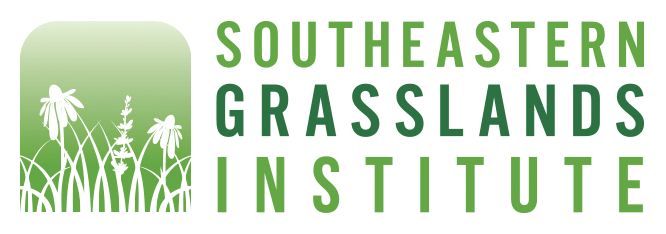The Southeastern Grasslands Institute presents Genus of the Month: Cirsium, the plume thistles
The genus Cirsium is a group of important native grassland plants in the larger plant group Asteraceae, or the sunflower family. The Flora of the Southeastern United States lists 20 species of Cirsium you may come across in our region. Of these, 17 are native to the United States, and 3 are non-native and considered invasive. Because of the feathery structures on their achenes (a type of single-seeded fruit), species in the genus Cirsium are commonly called plume thistles.
Benefits of Cirsium
Pollinators - thistles in the genus Cirsium produce nectar that attracts and supports many pollinator species, including bees, butterflies, moths, wasps, and hummingbirds.
Wildlife Food Source- Seeds produced by Cirsium species provide food for birds, as well as soft, fluffy material (called pappus) that birds use to line and insulate their nests.
Identifying Characteristics of Cirsium
Please find a key to the genus Cirsium linked here. Below are some defining characteristics of the genus.
Composite Flowers - Like other members of the Asteraceae family, what may look like an individual Cirsium flower is actually a complex inflorescence. A single flowering head is made up of numerous small, individual flowers, or florets, and an involucre, which is the cup-like ring of leafy bracts at the base. These bracts, which are also known as phyllaries, are important to pay close attention to when identifying Cirsium species; some have spine-tipped phyllaries, while others are smooth. (Fig 1)
Fig. 1 Cirsium altissimum, tall thistle, with arrows and brackets highlighting morphological characteristics of Cirsium species, including decurrent leaf tissue, flower head, phyllaries, florets, and the involucre.
Selected Native Cirsium Species
Cirsium altissimum (tall thistle)
Habitat: pastures, woodlands, thickets
Images by aggie_wildlifer (CC0)
Cirsium discolor (field thistle)
Habitat: pastures, woodlands, thickets
Images by casey_harless (CC0)
Cirsium muticum (swamp thistle)
Invasive Cirsium Species in the SGI Focal Area
Cirsium vulgare (bull thistle)
Native to Europe
Identifiable by leaves with bases that extend down the length of the stem (decurrent leaves), forming a spiny wing
Images by andreakautz(CC0) and philmaynard (CC0)
Cirsium arvense (Canada thistle)



Blog by SGI Staff; based on work by Alaina Krakowiak, SGI Central Appalachian Grasslands Coordinator/Ecologist; blog prepared by Dr. Eleanor Lopez, SGI Communications Specialist.


